Valley Forge Flag Company was founded in 1882, and remains a family-owned business to this day. Steeped in history, the company began as a burlap sac business, and then moved on to World War I surplus, including American flags. With increasing demand the company opened a small sewing factory in Spring City, PA in 1932. The opening of this factory was the beginning of Valley Forge Flag brand.
Valley Forge Flag’s mission is to manufacture 100% American-made U.S. flags. As a founding member of the Flag Manufacturers Association of America, Valley Forge educates the public and flag retailers about the significance of manufacturing American flags in the U.S. The association also helps enforce the labeling requirements for imported products. Any flag marked with the FMAA seal is guaranteed to be made in the U.S. with only American-made materials.
In 2005 Valley Forge Flag Company consolidated all of its manufacturing to South Carolina and closed its plant in Womelsdorf, Pennsylvania. Its headquarters moved to Reading, Pa. The company has around 500 employees, participates in the "welfare-to-work" program and employs disabled Americans.
Valley Forge flags are available at numerous retail outlets, large commercial flag dealers and online. Valley Forge Flag has a large product line including a variety of flags, flagpoles and accessories. The historical company will continue to manufacture high-quality, American-made products for years to come.
The United States Flag Store is the largest and most complete vendor of Valley Forge Flags, flagpoles and accessories, keeping a wide range of Valley Forge products in stock and carrying larger quantities than any other dealer.
Valley Forge Flags in Battle
World War II
Since World War II, Valley Forge American flags have been flown by the armed forces in many American wars, conflicts and battles. During WWII a Valley Forge flag was the American flag of the Pacific Fleet.
Japan The famous flag raised by five Marines and one Navy corpsman on Feb. 23, 1945 on Mount Suribachi in Iwo Jima, was manufactured by Valley Forge. On this date in the battle of Iwo Jima, Marines took control of Mount Suribachi, and the assault platoon raised a small American flag in victory. Later that day other troops lowered the small flag to raise a larger one, and news photographer Joe Rosenthal captured the moment in what would become an memorable, Pulitzer prize winning photograph. The flag raisers were Michael Stack, Harlon Block, Franklin Sousley, John Bradley, Ira Hayes and Rene Gagnon. The larger Iwo Jima flag is now on display at the National Museum of the Marine Corps in Triangle, Virginia.
Germany Between July 1937 and April 1945, 250,000 people from all countries of Europe were imprisoned at Buchenwald Concentration Camp in Germany by the Nazi regime. These prisoners, who were subjected to forced labor, medical experimentation, severe torture and death, consisted of Jewish people, political prisoners, criminals, Jehovah’s Witnesses, Prisoners of War, foreign forced laborers, German military deserters, resistance fighters, and former government officials of German-occupied countries. Including its 88 sub-camps across Germany, Buchenwald was one of the largest concentration camps created by the Nazis. On April 11, 1945, prisoners seized the camp awaiting liberation by invading U.S. troops. Later that day U.S. soldiers liberated more than 20,000 prisoners, and a Valley Forge American flag was raised as a symbol of the prisoners’ freedom.
France On June 6th, 1944, D-Day, Ste. Mère-Église in Normandy, France was liberated by Lieutenant-Colonel Edward C. Krause and his division. Ste. Mère-Église was the first French town to be liberated, and Krause raised an American flag manufactured by Valley Forge over the town. The flag, which was also flown in the liberation of Naples in 1943, was given to the town by Krause’s wife after his death. It is kept in the town hall.
The battle at Ste. Mère-Église was made famous by paratrooper John Steel, who landed on the church, entangling his parachute in the steeple. He was cut down and taken prisoner by the Germans and later released by the Americans. An effigy of John Steel is suspended on the church steeple today.
D-Day A Valley Forge flag was raised in pursuit of freedom on Omaha Beach in Normandy. Omaha Beach was one of five landing beaches, codenamed by the Allied Expeditionary Forces in the Normandy Invasion, a.k.a. "Operation Overlord." The invasion did not run smoothly, and the high death toll of more than 2,000 people gave the beach the name "Bloody Omaha." It was one of the most difficult assault landings in military history, but its success was important to the success of the entire Allied Invasion. Eventually the beach was secured.
Other Battles Valley Forge flags were also flown in the Korean Conflict, the Vietnam War, and more recent wars. With the high demand for U.S. flags, the military and government contracts became the core business of Valley Forge Flag. The company is still a leading flag supplier to the U.S. government.
Internment/Burial Flags Valley Forge Flag Co. has been the authorized internment flag dealer for the Veterans Administration for over 50 years. Valley Forge American flags have honored veterans and American Presidents like Dwight D. Eisenhower, Lyndon B. Johnson, Richard R. Nixon and John F. Kennedy as they were laid to rest.
The United States Department of Veterans Affairs will provide an American burial flag to all deceased veterans (except for those with a dishonorable discharge). The flag may be used to cover the casket or to accompany the urn of the deceased veteran. It is typically given to the next-of-kin after it is used in the funeral service.
To apply for an American flag for burial purposes, complete VA Form 21-2008. A funeral director will generally help you obtain a flag.
Valley Forge Flags in Space
Valley Forge flags have traveled in space, as they were aboard Apollo missions to the moon. They still travel on many space shuttle missions.
Flag on the Moon President John F. Kennedy announced America’s mission to send astronauts to the moon on May 25, 1961. Eight years later on July 20, 1969, America’s goals were met and exceeded as Apollo 11 shuttle commander, Neil Armstrong, stepped out of the shuttle and onto the moon’s surface. This was a huge accomplishment for humankind and for America. Neil Armstrong and module pilot, Edwin E. "Buzz" Aldrin, Jr. placed the first American flag on the moon. This flag was manufactured by Valley Forge. Buzz Aldrin said that saluting the American flag on the moon was one of the prouder moments of his life. Some believe the entire moon landing to be a hoax. The flag has been used as key evidence. In photos it appears to be blowing in the breeze, but there is no atmosphere or wind on the moon. NASA explains that a rod was placed at the top of the flag to keep it suspended, and the waving motion was from the astronauts installing the pole. Since there is no air on the moon, the flag’s waving motion continues, following Newton’s First Law of Physics. On Earth air would slow the motion of the flag.
The Challenger Flag A Valley Forge flag traveled aboard the disastrous Challenger space mission in 1986. Boy scouts and their scoutmaster, an Air Force Major and Chief of the Manned Space Flight Division, Second Space Wing (Falcon Air Force Base, Colorado), sent their troop flag to the Kennedy Space Center several times. Finally the flag, now deemed the "Challenger Flag," was placed upon a shuttle. Previously the flag had flown above the U.S. Capitol, and the boys were excited to see their flag go into space. Barely a minute after the Challenger’s takeoff, the shuttle exploded, killing everyone on board and scattering debris into the Atlantic Ocean below. It was a devastating tragedy for the entire country. Miraculously, eight months later, the troop leader and the scouts were informed that their flag had survived the disaster with no damage. The flag was retrieved from the bottom of the Atlantic Ocean and returned to the troop. In 1987 the flag flew over the United States Capitol for a second time. It was displayed in Salt Lake City for the 2002 Winter Olympics.
Valley Forge Flags in Hollywood
In addition to Valley Forge's involvement in the actual events, 48-star Valley Forge American flags have been used in several big name motion pictures and one TV series depicting the WWII era.
Saving Private Ryan Set in Normandy, France, Saving Private Ryan focuses on the search for a young private (Matt Damon) to bring him home after the deaths of his three brothers. Directed by Steven Spielberg and written by Robert Rodat, the film won several Oscars. Leading actors include Tom Hanks, Matt Damon, Tom Sizemore and Edward Burns. The storyline is fictional, but the portrayals of the American battles in Normandy and the D-Day landings at Omaha beach are fairly accurate. The American flag has an important presence, as it is shown at the open and close of the film.
Band of Brothers Based on the book by the late WWII historian, Stephan E. Ambrose, the 10-part mini-series Band of Brothers was produced by Steven Spielberg and Tom Hanks for HBO. The series tells the story of WWII paratrooper unit, Easy Company, from their experiences at training camp to their victory on D-Day. The series stars Dexter Fletcher, Damian Lewis, David Schwimmer, Donnie Walhberg and Ron Livingstone. The actors of Band of Brothers and Saving Private Ryan endured a stint at boot camp to learn the basics and to better understand their roles. With a cost of $120 million, Band of Brothers is the most expensive TV series ever made. It won a Golden Globe award and an Emmy.
Flags of Our Fathers based on the New York Times Bestseller of the same title by James Bradley, depicting the stories of the surviving flag raisers after the battle of Iwo Jima. The film was produced by Clint Eastwood, Steven Spielberg and Robert Lorenz and directed by Clint Eastwood. Actors include Ryan Phillippe (John Bradley), Adam Beach (Ira Hayes), Jesse Bradford (Rene Gagnon) and Jamie Bell (Ralph Ignatowski). The American flag plays a central role in this film as the flag raising on Mt. Suribachi is reenacted, and the characters’ lives are changed forever.
Letters From Iwo Jima A companion film to Flags of Our Fathers, Letters from Iwo Jima tells the story of the battle of Iwo Jima from the perspective of the Japanese military. Produced by Clint Eastwood, Paul Haggis, Robert Lorenz and Steven Spielberg, directed by Clint Eastwood and written by Iris Yamashita, the film focuses on the Japanese defense of Iwo Jima. The story is told through actions and through letters the soldiers write home to their families.
Letters from Iwo Jima is filmed in Japanese with English subtitles, and it stars Ken Watanabe, Tsuyoshi Ihara and Kazunari Ninomiya. The film won an Academy Award and a Golden Globe. Valley Forge flags will continue to be involved in American history.
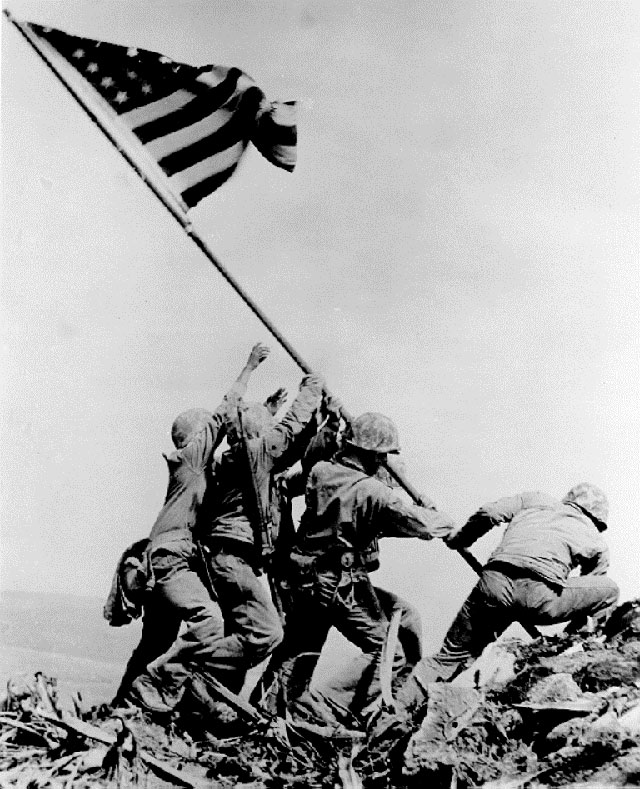 The flag raising at Iwo Jima. The flag raisers are Hayes, Sousley, Bradley and Block (left to right). In the back, Strank is behind Sousley, and Gagnon is behind Bradley. Photo from the U.S. Dept. of Defense.
The flag raising at Iwo Jima. The flag raisers are Hayes, Sousley, Bradley and Block (left to right). In the back, Strank is behind Sousley, and Gagnon is behind Bradley. Photo from the U.S. Dept. of Defense.
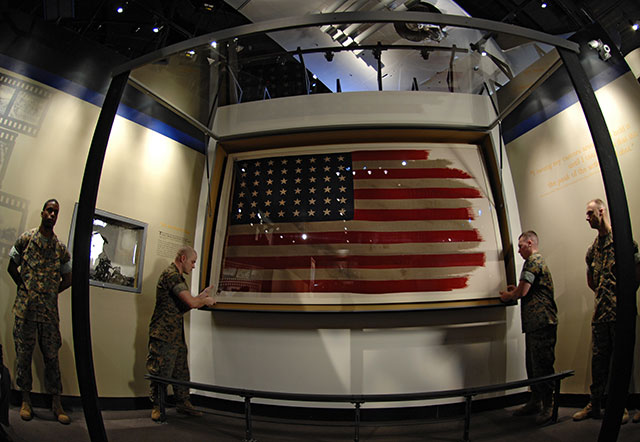 The flag raising at Iwo Jima. The flag raisers are Hayes, Sousley, Bradley and Block (left to right). In the back, Strank is behind Sousley, and Gagnon is behind Bradley. Photo from the U.S. Dept. of Defense.
The flag raising at Iwo Jima. The flag raisers are Hayes, Sousley, Bradley and Block (left to right). In the back, Strank is behind Sousley, and Gagnon is behind Bradley. Photo from the U.S. Dept. of Defense.
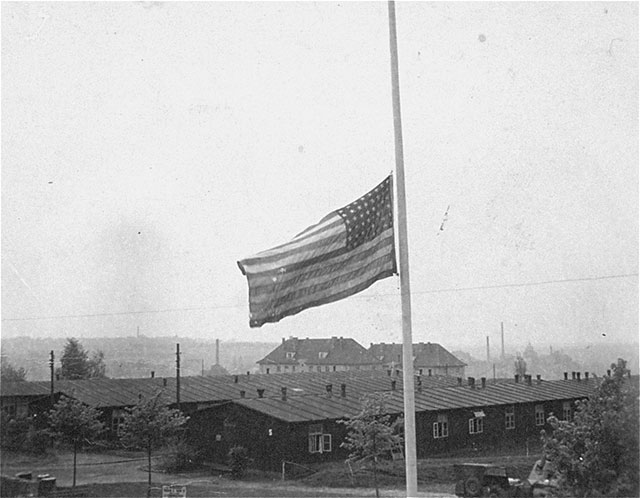 The American flag flying half mast in Buchenwald. Photo from the United States Holocaust Memorial Museum.
The American flag flying half mast in Buchenwald. Photo from the United States Holocaust Memorial Museum.
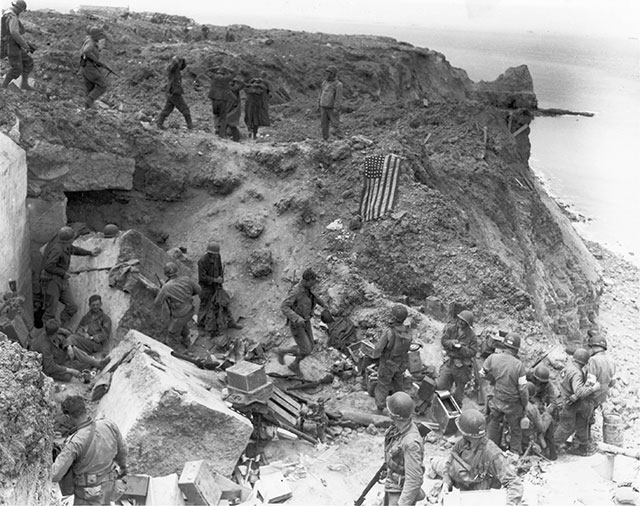
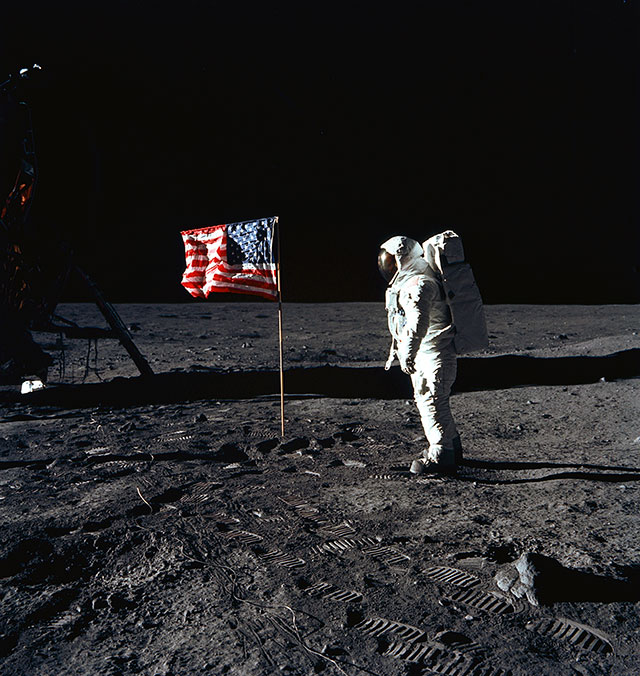
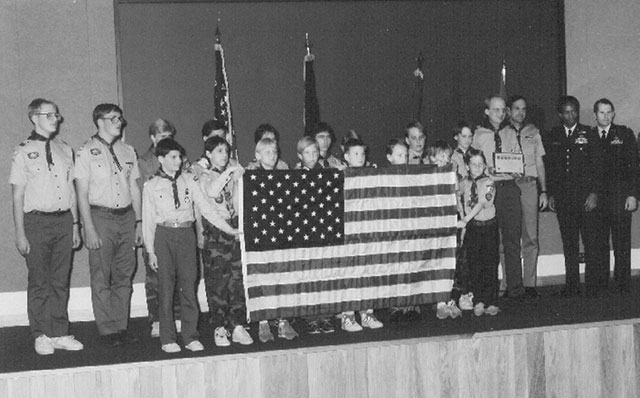
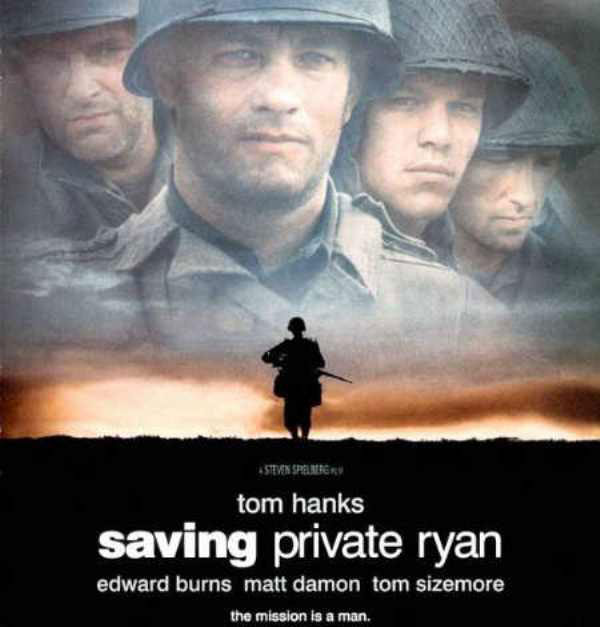
References"Apollo: Expanding Our Knowledge of the Solar System", "The First Lunar Landing: Part II" & "The Moon Landing Hoax" NASA. Band of Brothers: Currahee HBO. "Burial Flags" United States Department of Veteran Affairs. "D-Day, the Normandy Invasion, 6-25 June 1944" Naval Historical Center 2007. Holocaust Encyclopedia: "Buchenwald" United States Holocaust Memorial Museum. IwoJima.com. Letters From Iwo Jima Warner Bros. Studios. "Message in a Battle" "Movie Synopsis" . "St. Mere Eglise"The Battle of Normandy. Meridian Magazine.
